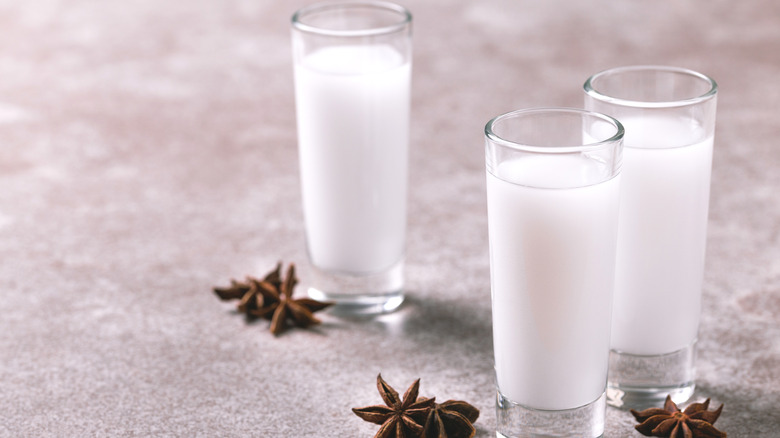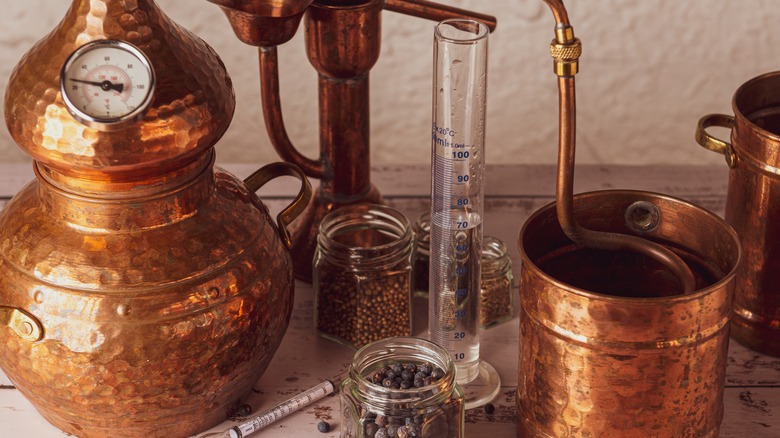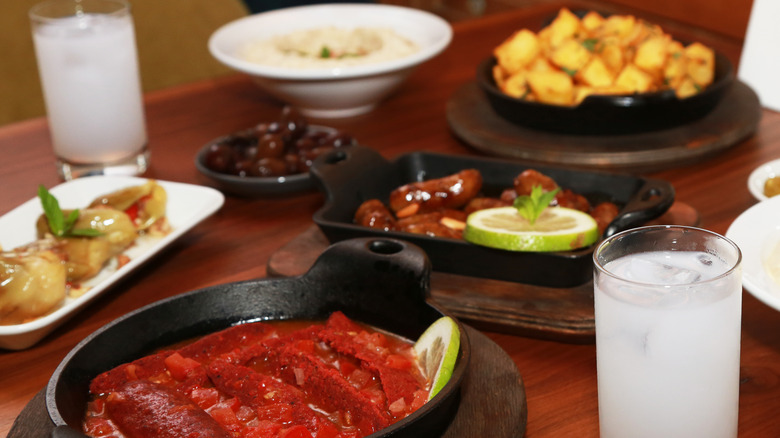The Cultural Significance Behind Arak, A Timeless Levantine Drink
Of all the anise spirits in the world, Arak is the original. The popular Middle Eastern digestif is made from white grapes and anise seed and known for its intense licorice flavor and harsh alcoholic finish. It's generally served with a splash of water to dilute a surprisingly high alcohol content, incidentally creating its characteristic cloudy, milky hue.
Fellow anise spirits like ouzo, sambuca, and absinthe have made it onto shelves in bars and liquor stores worldwide, mixed into modern cocktails or touted for hallucinogenic effects. However, Arak's popularity is still mainly concentrated within the Levantine region of its origin, with a cultural significance as multifaceted and historical as the region itself.
Arak is a household staple in Middle Eastern Mediterranean countries, especially Lebanon, where it's considered the national drink. Lebanese, Syrian, Palestinian, and Jordanian nationals have begun opening small-batch distilleries of their own, working with international spirit importers, elevating Arak to artisanal heights and consequently piquing the West's culinary curiosity.
History and culturual significance
The origins of Arak coincide with the invention of the distillation pot still in the 8th century by Arab chemist Jabir ibn Hayyan. Both distillation and Arak were happy accidents, the unintended result of an attempt to upgrade a makeup product. Instead of a better eyeliner, Hayyan introduced the world to the prototype of Arak and the revolutionary process of distillation.
Since its inception, Arak has played a key role in the culinary, social, and medical aspects of Middle Eastern culture. Arak accompanies the long, multicourse meals that have brought families and friends together for centuries. Most families brew their own Arak to serve with Sunday evening dinners.
Not only is it part of the social glue that unites people around the dinner table, but it also facilitates digestive wellness which feeds into the concept of food as medicine. Modern Western cultures tend to value the intoxicating effects of distilled spirits, but Middle Eastern culinary customs dilute Arak and sip it slowly throughout a meal to complement the food and aid in its digestion.
The past few decades have seen a growing appreciation for distilled spirits as authentic expressions of long-standing traditions. Artisanal and craft distillers in Europe and the Middle East have capitalized on this movement by marketing small-batch, artisanal Arak to global markets and younger generations. Today, Arak production and distribution is a growing, multi-billion dollar industry.
How Arak is made and enjoyed
In Lebanon, Arak is the national drink with a government-regulated set of guidelines on its production akin to tequila production in Mexico or Champagne in France. Arak must use a specific type of white grape from the Levantine region to ferment into white wine before undergoing three distillations. The first two distillations convert the wine into a highly alcoholic spirit and remove impurities, while the third distillation infuses Arak with anise seeds, giving the spirit its distinct flavor.
Due to its intense flavor and high alcohol content, Arak is diluted and served with copious amounts of food. Dilution is usually at the drinker's discretion, but ratios range from a 1:2 to 1:4 portions of Arak to water. When water and Arak combine, a reaction occurs with a compound in anise seed that changes the spirit from clear to white and cloudy, a desired phenomenon called louche. To achieve louche, you need a clean glass for every serving, and the Arak goes into the glass before adding water. It's common to add a cube of ice to refresh and further dilute the flavor and alcohol content. Arak is meant to be sipped very slowly throughout a long meal; it pairs well with citrus, garlic, and raw meat dishes consumed during long meals while also kickstarting digestion.


